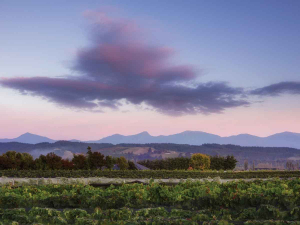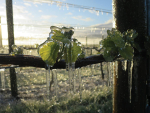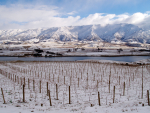The often-cool periods of weather that have plagued much of New Zealand this summer have broken and now a mild early autumn has arrived, along with the traditional northwesterlies.
Wairarapa and North Canterbury had their coldest recorded January, with data for those locations stretching back over 50 years. Elsewhere, Hawke’s Bay and Gisborne recorded temperatures very close to record lows for January. A return to near normal temperatures was the outcome for February, and now some consistently warm weather has dominated the middle of March. La Niña arrived mid-summer and should now weaken through autumn and early winter. There is the likelihood of humid northeasterly conditions returning in early to mid-April as the Madden-Julian Oscillation phase reaches the western Pacific Ocean and increases the chances of low-pressure development north of New Zealand. The Southern Oscillation Index remains close to neutral so periods of westerly winds are also expected for the remainder of autumn, which may lead to cooler southwest changes followed by cool mornings and frosts, especially from late April onwards.
Diurnal range & the mean temperature
The amount of available heat from the sun decreases through autumn and at an increasing rate through April and early May. This is a time when large variations between daytime and night-time temperature can occur. On occasions the temperature can vary by more than 20C from the coldest part of the early morning before dawn through until mid-afternoon. Under stable anticyclonic conditions, or as a light northwesterly airstream develops, this can become even more pronounced. With longer nights there is more time available for the air to cool, and under clear, settled conditions the air will cool steadily and quickly through the night. The most likely scenario for these large ranges in temperature is under an anticyclone; with stable and usually clear skies there is strong radiational cooling at night. As we get later into autumn, fog can form in low lying areas and light frosts occur as well.
The mean temperature for a day is calculated by taking the average of the maximum and minimum temperature for a particular location so a typical settled day in autumn might look like a minimum of 8C and a high of 23C which would equate to a mean of 15.5C. When the air is particularly dry or a mild northwest flow develops, these variations often become quite exaggerated. A morning temperature on the east coast could be close to freezing at dawn but rise to over 25C during the afternoon with the onset of a northwesterly airstream.
Increased northeasterly flows have a twofold effect for east coast regions. First, the onshore flow brings moisture. The increase in humidity slows the rate of cooling under settled conditions and also increases the likelihood of cloud forming. This reduces the diurnal range. A typical temperature profile might range from 13C at dawn to 18C by 3pm, which would still have a mean temperature of 15.5C.
Outlook for April and May
Gisborne/Hawke's Bay
A more humid and cloudier period of weather is expected for the first half of April, but conditions should become sunnier and milder during the daytime from late April onwards, as the northeast flow weakens and a westerly airstream redevelops. Rainfall totals are likely to run near average, but there is a risk of higher-than-normal rainfall at times through early April.
Wairarapa
West to northwest winds will be stronger at times as fronts approach New Zealand from the west and this may increase for a time from mid-April and through early May. Mean temperatures are likely to remain a little above average, but night-time temperatures may remain close to average across the region, with cool nights following any southwest change. Rainfall totals are likely to be close to or a little below average through until the onset of winter.
Nelson
Temperatures are likely to continue to run above average for the remainder of autumn. Rainfall totals may run near average but could increase with active fronts moving in from the west. Northwest winds are likely to ease through early April then return for a time later in the month. There is a risk of frost at times from late April as cooler and drier southwest changes cross the upper South Island.
Marlborough/North Canterbury
Temperatures remain above average and wind speeds are likely to remain stronger than average from mid-April with the flow tending west to northwest. Humidity is likely to be lower under the westerly flow through late April and into May, this may lead to an increased range between night-time and daytime temperatures and some early frost across the regions. Rainfall totals are expected to run a little below average, but an increased northeast flow through early April has the potential to bring a humid easterly airstream to the east coast of the upper South Island.
Central Otago
Temperatures are likely to remain above average for the remainder of autumn. Northwest winds continue, which contributes to milder day time maximums. Cool southwest changes are also expected and this should increase the number of frost mornings from late April onwards. Rainfall is expected to be near or a little below average. There will be the chance of heavier rain if the northwest flow becomes particularly vigorous and mixes with cold sub-Antarctic air as winter approaches.
James Morrison runs Weatherstation Frost Forecasting: weatherstation.net.nz














